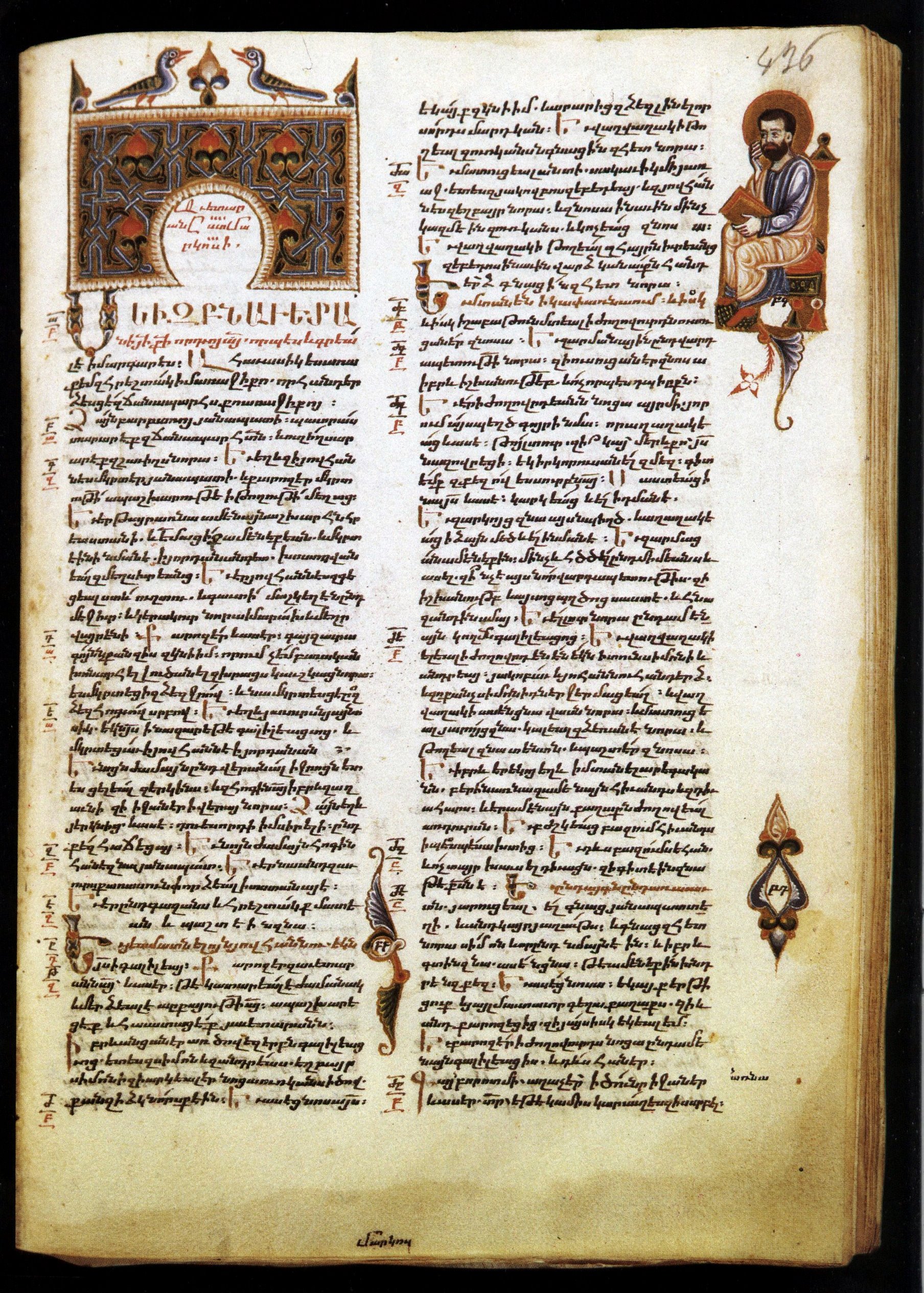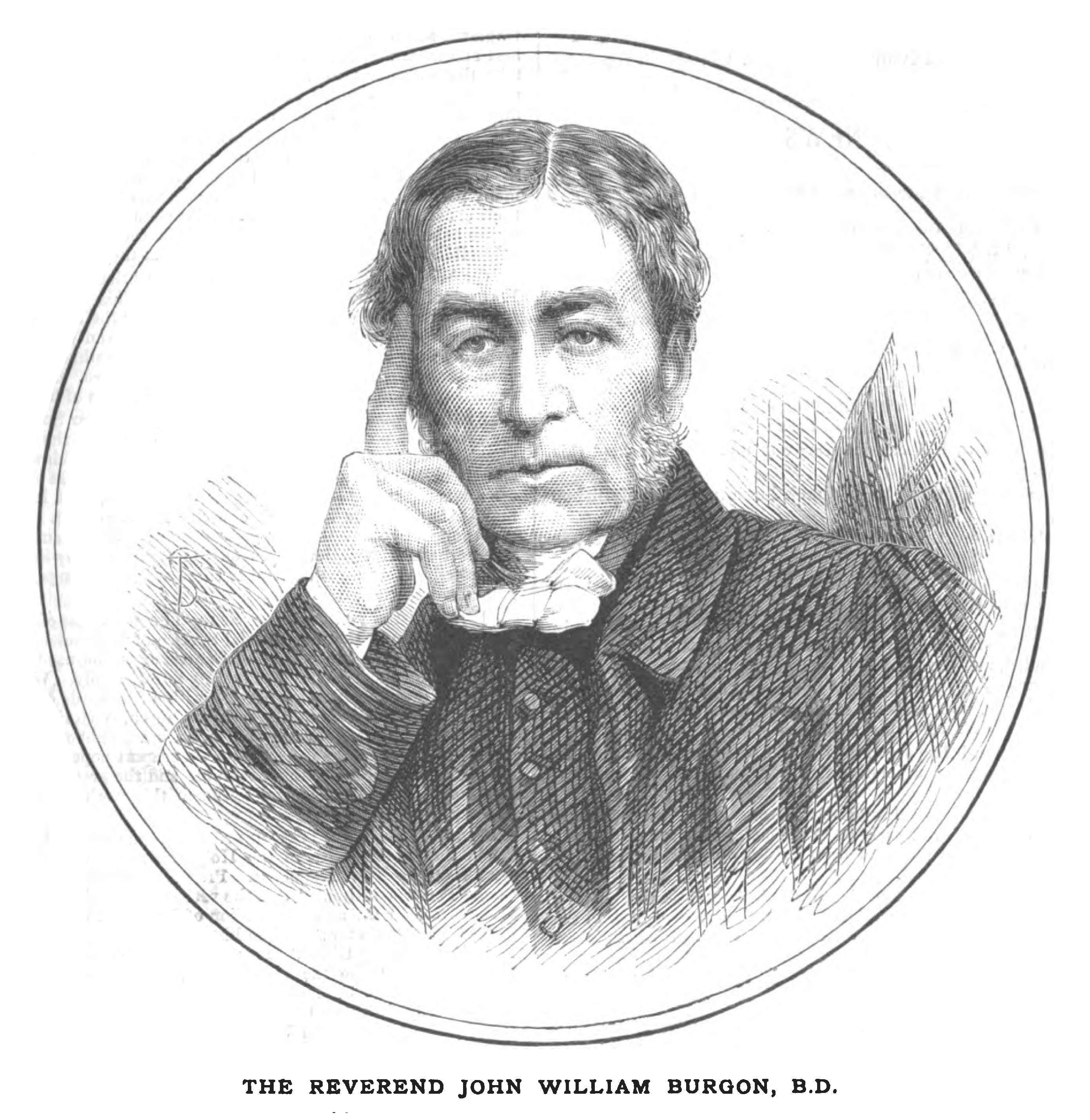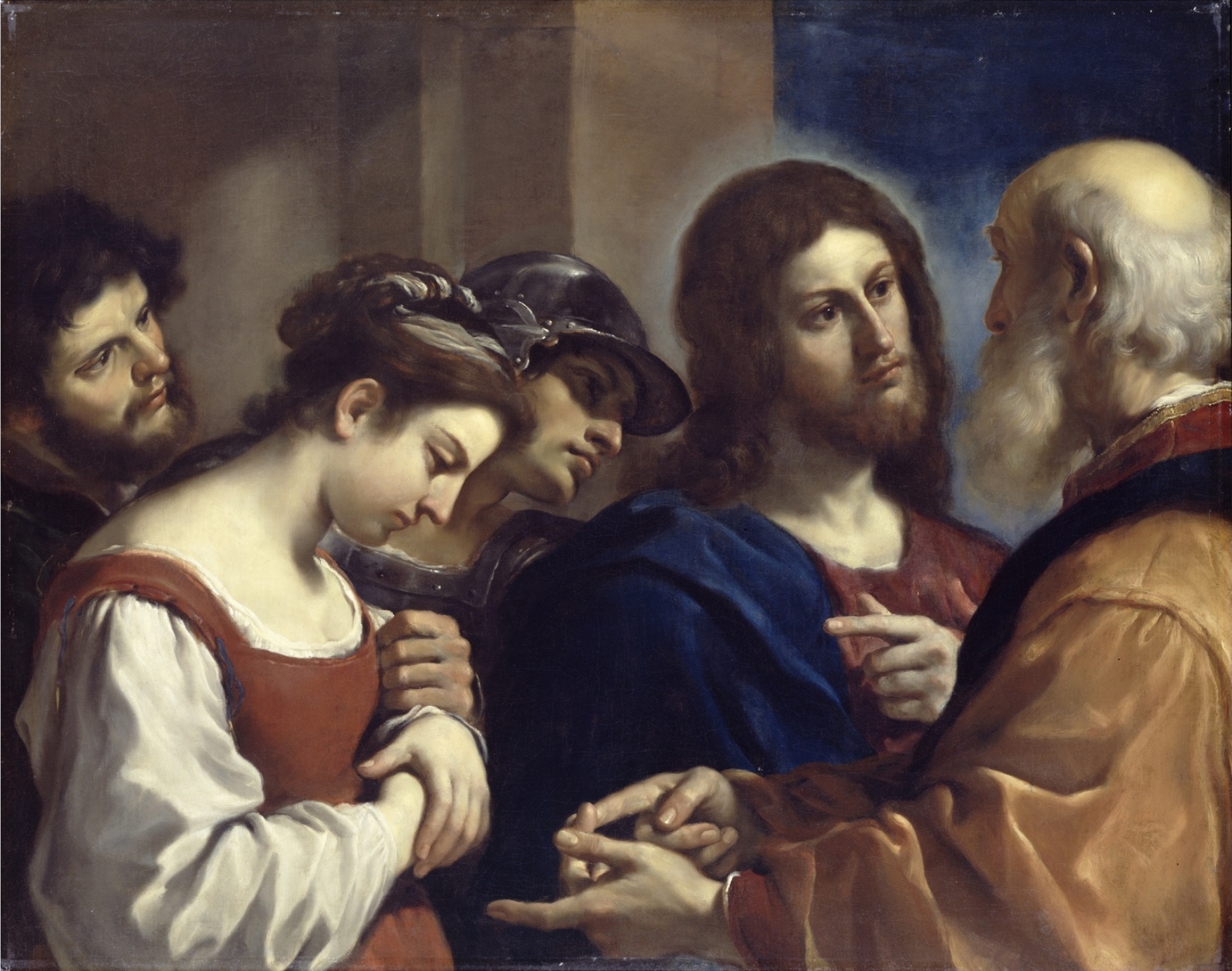|
Minuscule 207
Minuscule 207 (in the Gregory-Aland numbering), ε 126 ( Soden), is a Greek minuscule manuscript of the New Testament, on parchment. Palaeographically it has been assigned to the 11th century.K. Aland, M. Welte, B. Köster, K. Junack, "Kurzgefasste Liste der griechischen Handschriften des Neues Testaments", ''Walter de Gruyter'', Berlin, New York 1994, p. 59. The manuscript is lacunose. It has marginalia. Description The codex contains the text of the four Gospels on 267 parchment leaves (size ), with some lacunae (Matthew 1:1-13; Mark 1:1-11 - for the sake of illuminations). It is written in two columns per page, in 22 lines per page. The text is divided according to the (''chapters''), whose numbers are given at the margin, and the (''titles of chapters'') at the top of the pages. There is also a division according to the Ammonian Sections (in Mark 241 sections), (no references to the Eusebian Canons). It contains Prolegomena to the four Gospels, Epistula ad Carpianum, ... [...More Info...] [...Related Items...] OR: [Wikipedia] [Google] [Baidu] |
Gospel
Gospel originally meant the Christian message (" the gospel"), but in the 2nd century it came to be used also for the books in which the message was set out. In this sense a gospel can be defined as a loose-knit, episodic narrative of the words and deeds of Jesus, culminating in his trial and death and concluding with various reports of his post-resurrection appearances. Modern scholars are cautious of relying on the gospels uncritically, but nevertheless, they provide a good idea of the public career of Jesus, and critical study can attempt to distinguish the original ideas of Jesus from those of the later authors. The four canonical gospels were probably written between AD 66 and 110. All four were anonymous (with the modern names added in the 2nd century), almost certainly none were by eyewitnesses, and all are the end-products of long oral and written transmission. Mark was the first to be written, using a variety of sources. The authors of Matthew and Luke both indepe ... [...More Info...] [...Related Items...] OR: [Wikipedia] [Google] [Baidu] |
A Plain Introduction To The Criticism Of The New Testament
''A Plain Introduction to the Criticism of the New Testament: For the Use of Biblical Students'' is one of the books of Frederick Henry Ambrose Scrivener (1813–1891), biblical scholar and textual critic. In this book Scrivener listed over 3,000 Greek manuscripts of the New Testament, as well as manuscripts of early versions. It was used by Gregory for further work. The book was published in four editions. The first edition, published in 1861, contained 506 pages. The second edition (1874) was expanded into 626 pages; the third into 751 pages; and the fourth into 874 pages. Two first editions were issued in one volume; in the third edition the material was divided into two volumes, with an increased number of chapters in each. The first volume was edited in 1883, the second in 1887. The fourth edition was also issued in two volumes (1894). The fourth edition of the book was reprinted in 2005 by Elibron Classics. First Edition The text of the first edition was divided i ... [...More Info...] [...Related Items...] OR: [Wikipedia] [Google] [Baidu] |
Venice
Venice ( ; it, Venezia ; vec, Venesia or ) is a city in northeastern Italy and the capital of the Veneto region. It is built on a group of 118 small islands that are separated by canals and linked by over 400 bridges. The islands are in the shallow Venetian Lagoon, an enclosed bay lying between the mouths of the Po and the Piave rivers (more exactly between the Brenta and the Sile). In 2020, around 258,685 people resided in greater Venice or the ''Comune di Venezia'', of whom around 55,000 live in the historical island city of Venice (''centro storico'') and the rest on the mainland (''terraferma''). Together with the cities of Padua and Treviso, Venice is included in the Padua-Treviso-Venice Metropolitan Area (PATREVE), which is considered a statistical metropolitan area, with a total population of 2.6 million. The name is derived from the ancient Veneti people who inhabited the region by the 10th century BC. The city was historica ... [...More Info...] [...Related Items...] OR: [Wikipedia] [Google] [Baidu] |
Dean Burgon
John William Burgon (21 August 18134 August 1888) was an English Anglican divine who became the Dean of Chichester Cathedral in 1876. He was known during his lifetime for his poetry and his defence of the historicity and Mosaic authorship of Genesis and of biblical infallibility in general. Long after his death he was remembered chiefly for his defense of the traditional text of the New Testament. Biography Burgon was born at Smyrna (now İzmir), on 21 August 1813, the son of Thomas Burgon an English merchant trading in Turkey who was also a skilled numismatist and afterwards became an assistant in the antiquities department of the British Museum. His mother is often said to have been Greek but was in fact the daughter of the Austrian consul at Smyrna and his English wife. During his first year the family moved to London, where he was sent to school. After a few years of business life, working in his father's counting-house, Burgon went to Worcester College, Oxford, in 1 ... [...More Info...] [...Related Items...] OR: [Wikipedia] [Google] [Baidu] |
Andreas Birch
Andreas Birch (November 6, 1758 – October 25, 1829) was a professor from Copenhagen.Fr. NielsenBiografii 1. '' Dansk biografisk leksikon'', edited by C.F. Bricka, 2. volume, page 280, Gyldendal, 1887–1905 Birch was sent in 1781–1783 by the king of Denmark, Christian VII, to examine manuscripts in Italy, Germany, and other European countries. Life Birch had a difficult experience at the age of 4 when in one month he lost both of his parents. His uncle, brewer A. T. Gardenholtz, took care of him, however, and by the year 1774, he was a student. Five years later he finished his theological studies in Copenhagen and travelled to Göttingen to continue his theological and philological studies under the guidance of Johann David Michaelis' and Christian Gottlob Heyne. Michaelis, who had big expectations for Birch's scientific abilities, advised him to travel to Italy to study "the hidden and hitherto unused manuscripts of the New Testament." Prime Minister Ove Høegh-Guldb ... [...More Info...] [...Related Items...] OR: [Wikipedia] [Google] [Baidu] |
Basilios Bessarion
Bessarion ( el, Βησσαρίων; 2 January 1403 – 18 November 1472) was a Byzantine Greek Renaissance humanist, theologian, Catholic cardinal and one of the famed Greek scholars who contributed to the so-called great revival of letters in the 15th century. He was educated by Gemistus Pletho in Neoplatonic philosophy and later served as the titular Latin Patriarch of Constantinople. He eventually was named a cardinal and was twice considered for the papacy. His baptismal name was Basil (Greek: Βασίλειος, ''Basileios'' or ''Basilios''). The name Bessarion he took when entering the monastery. He has been mistakenly known also as Johannes Bessarion ( it, Giovanni Bessarione) due to an erroneous interpretation of Gregory III Mammas. Biography Bessarion was born in Trebizond, the Black Sea port in northeastern Anatolia that was the heart of Pontic Greek culture and civilization during the Byzantine and Ottoman periods. The year of his birth has been given as ... [...More Info...] [...Related Items...] OR: [Wikipedia] [Google] [Baidu] |
Gospel Of John
The Gospel of John ( grc, Εὐαγγέλιον κατὰ Ἰωάννην, translit=Euangélion katà Iōánnēn) is the fourth of the four canonical gospels. It contains a highly schematic account of the ministry of Jesus, with seven "signs" culminating in the raising of Lazarus (foreshadowing the resurrection of Jesus) and seven "I am" discourses (concerned with issues of the Split of early Christianity and Judaism, church–synagogue debate at the time of composition) culminating in Doubting Thomas, Thomas' proclamation of the risen Jesus as "my Lord and my God". The gospel's concluding verses set out its purpose, "that you may believe that Jesus is the Christ, the Son of God, and that believing you may have life in his name." John reached its final form around AD 90–110, although it contains signs of origins dating back to AD 70 and possibly even earlier. Like the three other gospels, it is anonymous, although it identifies an unnamed "disciple whom Jesus loved" as t ... [...More Info...] [...Related Items...] OR: [Wikipedia] [Google] [Baidu] |
Jesus And The Woman Taken In Adultery
Jesus and the woman taken in adultery (or the ) is a passage (pericope) found in John 7:53– 8:11 of the New Testament. It has been the subject of much scholarly discussion. In the passage, Jesus was teaching in the Second Temple after coming from the Mount of Olives. A group of scribes and Pharisees confronts Jesus, interrupting his teaching. They bring in a woman, accusing her of committing adultery, claiming she was caught in the very act. They tell Jesus that the punishment for someone like her should be stoning, as prescribed by Mosaic Law. Jesus begins to write something on the ground using his finger; when the woman's accusers continue their challenge, he states that the one who is without sin is the one who should cast the first stone at her. The accusers and congregants depart, realizing not one of them is without sin either, leaving Jesus alone with the woman. Jesus asks the woman if anyone has condemned her and she answers no. Jesus says that he, too, does not ... [...More Info...] [...Related Items...] OR: [Wikipedia] [Google] [Baidu] |
Claremont Profile Method
The Claremont Profile Method is a method for classifying ancient manuscripts of the Bible. It was elaborated by Ernest Cadman Colwell and his students. Professor Frederik Wisse attempted to establish an accurate and rapid procedure for the classification of the manuscript evidence of any ancient text with large manuscript attestation, and to present an adequate basis for the selection of balanced representatives of the whole tradition. The work of Wisse is limited only to three chapters in Luke: 1, 10, and 20. Wisse's profiles The word before the bracket is the reading of the UBS edition. The profile of a manuscript is formed by noting the numbers of those test readings where the manuscript agrees with the bold reading. The readings which are not bold are those of the Textus Receptus. Luke 1 * Luke 1:2 (1 reading) — ] * Luke 1:7 (2 reading) — ην η ελισαβετ ] η ελισαβετ ην * Luke 1:7 (3 reading) — η ] omit * Luke 1:8 (4 reading) — ] ενα ... [...More Info...] [...Related Items...] OR: [Wikipedia] [Google] [Baidu] |
Categories Of New Testament Manuscripts
New Testament manuscripts in Greek are categorized into five groups, according to a scheme introduced in 1981 by Kurt Kurt is a male given name of Germanic or Turkish origin. ''Kurt'' or ''Curt'' originated as short forms of the Germanic Conrad, depending on geographical usage, with meanings including counselor or advisor. In Turkish, Kurt means "Wolf" and is ... and Barbara Aland in ''The Text of the New Testament''. The categories are based on how each manuscript relates to the various text-types. Generally speaking, earlier Alexandrian manuscripts are category I, while later Byzantine manuscripts are category V. Aland's method involved considering 1000 passages where the Byzantine text differs from non-Byzantine text. The Alands did not select their 1000 readings from all of the NT books; for example, none were drawn from Matthew and Luke. Description of categories The Alands' categories do not simply correspond to the text-types; all they do is demonstrate the 'B ... [...More Info...] [...Related Items...] OR: [Wikipedia] [Google] [Baidu] |
Kurt Aland
Kurt Aland (28 March 1915 – 13 April 1994) was a German theologian and biblical scholar who specialized in New Testament textual criticism. He founded the ''Institut für neutestamentliche Textforschung'' (Institute for New Testament Textual Research) in Münster and served as its first director from 1959 to 1983. He was one of the principal editors of '' Nestle–Aland – Novum Testamentum Graece'' for the Deutsche Bibelgesellschaft and '' The Greek New Testament'' for the United Bible Societies. Life Aland was born in Berlin- Steglitz. He started studying theology in 1933 at the Friedrich-Wilhelms-Universität in Berlin (he also studied philology, archaeology, and history). On 23 March that year, he was examined before the ''Bruderrat'' (council of brothers) in the '' Bekennende Kirche'' (Confessing Church). During his studies, he worked for the journal of the Confessing Church, ''Junge Kirche'' (Young Church). In an ideological brochure, ''Wer fälscht?'' (Who is lyi ... [...More Info...] [...Related Items...] OR: [Wikipedia] [Google] [Baidu] |
William B
William is a masculine given name of Norman French origin.Hanks, Hardcastle and Hodges, ''Oxford Dictionary of First Names'', Oxford University Press, 2nd edition, , p. 276. It became very popular in the English language after the Norman conquest of England in 1066,All Things William"Meaning & Origin of the Name"/ref> and remained so throughout the Middle Ages and into the modern era. It is sometimes abbreviated "Wm." Shortened familiar versions in English include Will, Wills, Willy, Willie, Liam, Bill, and Billy. A common Irish form is Liam. Scottish diminutives include Wull, Willie or Wullie (as in Oor Wullie or the play ''Douglas''). Female forms are Willa, Willemina, Wilma and Wilhelmina. Etymology William is related to the German given name ''Wilhelm''. Both ultimately descend from Proto-Germanic ''*Wiljahelmaz'', with a direct cognate also in the Old Norse name ''Vilhjalmr'' and a West Germanic borrowing into Medieval Latin ''Willelmus''. The Proto-Germa ... [...More Info...] [...Related Items...] OR: [Wikipedia] [Google] [Baidu] |

.jpg)




